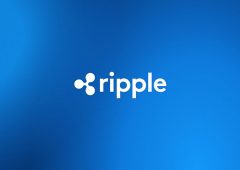Ripple Aims to Lead in Digital Asset Infrastructure for Financial Services
23.07.2024 8:00 1 min. read Alexander Stefanov
Ripple’s president has outlined the company's ambitious goal to become the leading digital asset infrastructure provider for the financial sector.
In a recent blog post, Monica Long, president of Ripple, detailed the firm’s strategy to modernize traditional financial systems by integrating advanced digital asset tools.
She emphasized Ripple’s commitment to leveraging the XRP Ledger (XRPL) to offer decentralized finance solutions that are both secure and compliant.
Long highlighted Ripple’s intention to merge traditional finance with Web3 by utilizing its established reputation, technological expertise, and resources in areas like liquidity, custody, and compliance.
Ripple aims to be a comprehensive solution for enterprises seeking to incorporate blockchain technology without needing to develop it in-house.
She underscored Ripple’s unique position in bridging the gap between traditional finance and the crypto world, thanks to its extensive experience and advanced infrastructure.
Ripple plans to continually enhance its offerings to meet the evolving needs of its clients, believing that blockchain can deliver superior financial services compared to existing technologies.
-
1
Binance Prepares for THORChain Upgrade, Temporarily Halts RUNE Transfers
17.06.2025 16:55 1 min. read -
2
Developers Flock to Solana Projects as Ecosystem Activity Rises
24.06.2025 9:00 1 min. read -
3
Ford Tests Cardano-Powered Data Solution for Its Legal Archives
19.06.2025 10:00 1 min. read -
4
Hyperliquid Chosen as Core Reserve in Lion Group’s Blockchain Expansion
19.06.2025 12:00 1 min. read -
5
Cardano Leads Developer Activity, Ethereum Maintains Ecosystem Dominance
23.06.2025 20:00 1 min. read
Top 10 AI and Big Data Crypto Projects by Development Activity
According to new insights from market intelligence platform Santiment, development activity in the crypto sector’s AI and Big Data segment remains strong, with several major projects showing notable GitHub activity over the past 30 days.
Bitget Wallet Teams Up with Mastercard to Launch Crypto-Powered Payment Card
Bitget Wallet has entered a strategic partnership with Mastercard and Web3 payment provider Immersve to launch a new payment card that allows users to spend cryptocurrencies directly from their digital wallets.
Robinhood to Launch Tokenized Shares of OpenAI and SpaceX for European Users
Robinhood CEO Vlad Tenev revealed plans on Monday to bring tokenized equity offerings to the European market, starting with shares in private tech giants OpenAI and SpaceX.
XRP Ledger Deploys EVM-Compatible Sidechain to Expand Multichain Utility
The XRP Ledger (XRPL) has officially launched its Ethereum Virtual Machine (EVM) sidechain on mainnet — marking a major milestone in its effort to bridge XRP’s payment efficiency with Ethereum’s smart contract capabilities.
-
1
Binance Prepares for THORChain Upgrade, Temporarily Halts RUNE Transfers
17.06.2025 16:55 1 min. read -
2
Developers Flock to Solana Projects as Ecosystem Activity Rises
24.06.2025 9:00 1 min. read -
3
Ford Tests Cardano-Powered Data Solution for Its Legal Archives
19.06.2025 10:00 1 min. read -
4
Hyperliquid Chosen as Core Reserve in Lion Group’s Blockchain Expansion
19.06.2025 12:00 1 min. read -
5
Cardano Leads Developer Activity, Ethereum Maintains Ecosystem Dominance
23.06.2025 20:00 1 min. read


